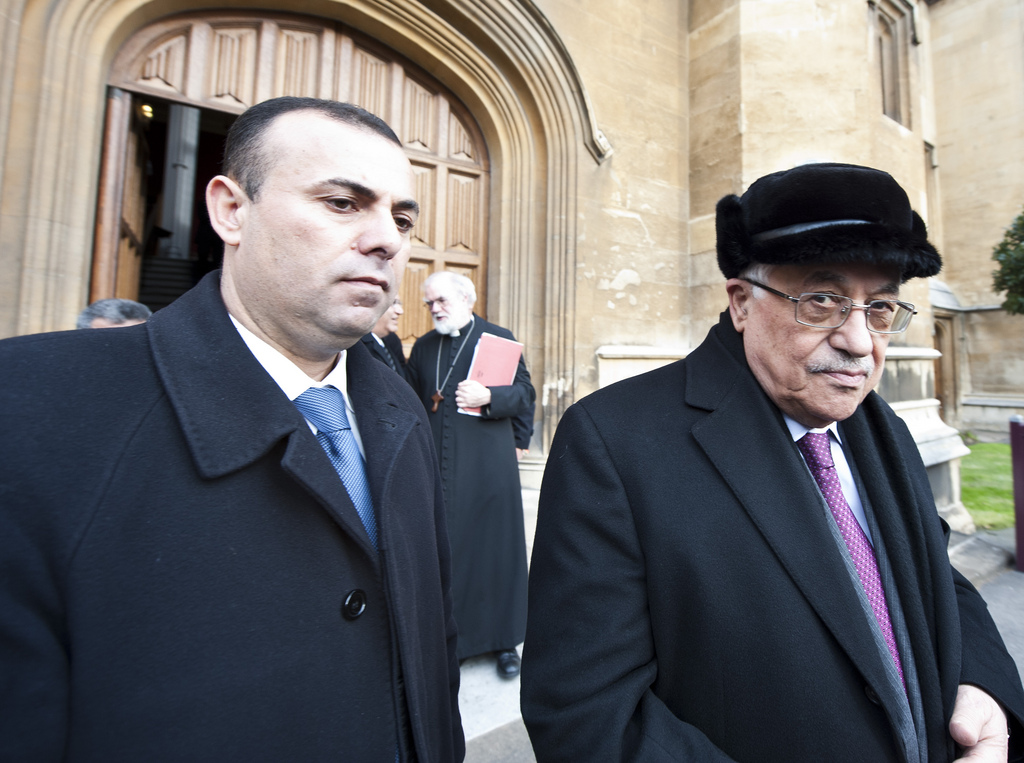By Deborah Avant for Denver Dialogues

A recent post by Ana O’Harrow and Mike Tierney reminds us to mind and measure—rather than just claim—the gap between academics and policy makers. They point out some useful attempts (by Avey and Desch and Weaver) to go beyond personal stories—as well as some very interesting personal stories (The Schoolhouse at War on the Rocks has some great ones). The vast majority of the discussion of the so-called “gap” between academia and the policy world, though (even the good work the TRIP project does), has focused on the written work of academics and its usefulness (or lack thereof) to policy makers.
But is this the only—or even the most important—way that academics influence policy makers? I think not.
A very interesting panel at the latest ISA meeting on “bridging the gap” (featuring Stephen del Rosso, Robert Gallucci, Nora Bensahel, Michael McFaul, and James Goldgeier) reflected on no fewer than eight different ways in which academics might influence policy. The first four are based on the kind of written scholarly work that has dominated our discussion this far:
- Produce data to be mined by policy makers (sometimes at the behest of policy makers—see for instance Erica Chenoweth’s “Major Episodes of Contention” project),
- Collectively come to overarching lessons about particular problems (e.g.: Page Fortna—along with many others—on peacekeeping works),
- Tap research on “cases of” that yield different analogies and thus different policy responses (for instance, how popular revolutions play out yields different potential responses if you think Iran 1979 versus the Philippines 1986),
- Delve deeply into a particular area for rich insights into cultures and practices specific to a place behavior (say, those who study Yemen in recent weeks),
But the last four ways point in directions we have not talked about much. Academics can also:
- Draw on research for policy advocacy through op-eds (the US should – or should not—arm the Ukrainians) or blogs (the Monkey Cage aims specifically to translate political science research for the policy domain, Political Violence @ a Glance, War on the Rocks, Dan Drezner, Chris Blattman, and others offer similar analysis for particular issues),
- Create analysis in partnership with policymakers – more likely to happen in a think tank but also among academics that contract with governments specifically to solve policy problems (Nora Bensahel mentioned work she had done at RAND; O’Harrow and Tierney mention a different model in the Diplomacy Lab; my colleague Barry Hughes and others at the Pardee Center for International Futures provide another example),
- Develop personal relations with individual policy makers based on long-standing research expertise. In other words, be one of the people a policy maker (at any level) calls for ideas or uses as a sounding board. John Ruggie’s continued interest in liberalism and governance and his personal relationship with Kofi Annan were key to his influence on key programs at the UN—both the Global Compact and the Guiding Principles on Business and Human Rights.
- Generate timely (and public) analysis of a particular policy sub-issue to put pressure on policy makers. Christian Davenport has done this both through his work on “politicide” in Rwanda and social movements and repression in the US.
The ISA panel got me thinking about the broader set of interactions among academics and policymakers and additional potential ways in which academic researchers can affect policy. By:
- Developing forums where policy makers and researchers meet, share experiences, and get new ideas. IGCC has a whole series of these on conflict and development. At the Sié Center we’ve hosted similar forums on regulating private security (see here for a workshop report and here for the web portal that resulted from these meetings), business and human rights, and many others.
- Working with particular government offices to offer academic advice to them – think of the National Intelligence Council.
And then, of course:
- Academic institutions—particularly APSIA schools—train the people that go to work in the policy arena. O’Harrow and Tierney point this out but what they don’t mention is that this effect goes far beyond government. If you look at where most APSIA schools place students you’ll see that fully two-thirds of our graduates pursue policy working for NGOs and commercial companies. This means that measuring the usefulness of their training for policy requires tapping into a much broader array of “policy makers”. Indeed Sidney Tarrow and Charles Tilly’s work on social movement mobilization, Clifford Bob on “marketing rebellion” and Margaret Keck and Katherine Sikkink’s boomerang effect have all been influential for advocacy NGOs.
Finally,
- Academic ideas can open the way for new narratives that can be widely influential in policy cicles. There are many examples: Paul Kennedy’s The Rise and Fall of Great Powers, Samuel Huntington’s Clash of Civilizations, Francis Fukuyama’s The End of History, Michael Doyle (and then many others) on the Democratic Peace.
This is by no means an exhaustive list but you get my point. Though policy makers may not read academic journals (and may be even less likely to read the overly “scientific” ones, as Avey and Desch suggest), they do read op-eds and blogs based on them. And while I am first in line behind the idea of opening up what counts as good research, I suspect that policy makers listen less to academics that don’t have professional success. Thus, while policy makers don’t read our journal articles, having well placed journal articles may be crucial to getting them to read our blogs. Understanding the relationship between academics and policy makers requires us to examine all twelve (or more) components and how they interact.
To get some policy input, I reached out to someone I have often worked with, Col. Christopher Mayer (US Army, retired) at the Department of Defense. According to him:
A key way to shape policy making is through shaping policy makers’ decision making process. That means accessing them early in their careers through their professional development institutions. Guest lecture, study, and participate in exchange programs at these institutions to influence the decision makers of tomorrow—they will remember you and your ideas.
A primary way for influencing the military or Department of Defense is to get a publication to the attention of the Army War College. For example, the Toffler’s War and Anti-War had tremendous influence on post-Cold War military thinking—a lot of RAND’s 1999 work on “The Army After Next” was based on the Toffler’s premises. Huntington’s Clash of Civilizations and various pieces by Kaplan had similar impacts within military circles. Works like these become reading materials in the Army’s Command and General Staff College and War College (as well as sister service institutions), where officers are required to read and discuss them, shaping their thinking long after.
How can academics bring their work to the attention of these establishments?
The modern infosphere makes garnering attention both easier and much more difficult. War on the Rocks and various blogs make research more widely available, but don’t ensure your work will stand out. Personal contacts are essential! We may be technologically interconnected, but human beings still work best through personal relationships. Establishing personal relationships with the people who develop curricula and can influence recommended reading lists is vital to getting wide exposure in policy making circles. You can do even better if you are willing to go to the war colleges as a guest lecturer and can adequately defend your thesis (despite the popular myth, military officers challenge EVERYTHING).
This debate and interaction is good for academics, too. Military leaders are practitioners; they have valuable experience that an academic may lack. It is one thing to study war and disaster, but it is another to have experienced them firsthand. Remember, too, that the vast majority of military officers at war colleges have graduate degrees (in many cases, more than one) and are often multi-lingual, so they grasp academic approaches, too. These officers will challenge your ideas, often demanding more practical and stronger logic than many academic peer reviews. Honesty is important; more than just important, actually, since the military culture makes it the highest virtue.
What should academics know about influencing policy makers?
If you want to be able to influence policy makers, you have to have an understanding of how policy makers make policy. They read the news, op-ed pieces, and are sometimes introduced to studies—usually in areas in which they are already knowledgeable. They do also ask for data or specific research, although sometimes the intent is to justify decisions already made. (I was extremely disappointed to learn that some researchers will support decision justification, ignoring or discounting information that would contradict that decision.)
More important to the decision-making process are the recommendations of policy staff. Staff members actually read the research, conduct the analysis, and present that analysis for decision along with their recommendation—which is usually what the decision maker agrees to. When I was a Chief of Staff (several times) I would tell my officers that if the boss made a bad decision, it was my fault. If he made a bad decision, I explained, it was because I failed to provide him the right information and present it in a way that enabled him to make the right decision.
So what does this mean? If you want to shape policy you need to reach out to the staff who are doing the analysis and making the recommendations that will become decisions. (This is not time wasted; remember that many of those staff members will become future decision makers). The first step in getting into the decision-making process is to identify the information of interest—what information the policy maker is or will be looking for—and do so hopefully before the decision has been made and justifying information is all that’s being sought. Personal contact with staff members is essential, as is targeting key decision makers. So learn about the topics that interest them, be aware of the developments and events that could generate some sort of action, and THEN provide information to decision makers’ staff BEFORE they ask for it. Closing the academic-policy gap in the ways you identified in items 1 through 7 can produce some potentially valuable inputs into this process.
Ultimately, academics must recognize that influencing policy is, in most cases, a long-term process.







5 comments